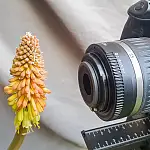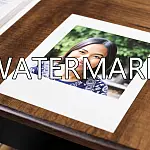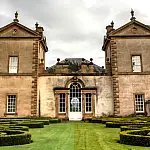How to Photograph Mushrooms and Fungi in the WildImprove your skills to photograph mushrooms and fungi with this guide loaded with tips, techniques and advice for fantastic mycology photos.
Mushrooms and fungi aren't thought to be considered one of the most glamorous or fashionable of the natural subjects available to outdoor photographers, however, their potential shouldn't be overlooked.
Mushrooms and fungi are certainly one of the most fascinating varieties of plant life on the plant. They have existed for millions of years and evolved into an extraordinary variety of types, with an enormous range of shapes, colours, and textures. Mushrooms and fungi are at their peak in autumn and can be seen adorning our lawns, parks, and forest. Through a camera lens, you'll be able to begin to appreciate their design and beauty.
If you haven't attempted to photograph mushrooms and fungi and before, now is the time to begin. Only simple equipment is needed so this is an accessible and enjoyable subject.

Where and How to Find Mushrooms and Fungi
Different kinds of mushrooms and fungi require different conditions and habitats. From autumn into early winter, fungi can be discovered growing in practically any place. They prefer wooded areas where there's moisture and old, rotting tree matter. If you wish to discover a good range of fungi to photograph, the best place to being is your nearest deciduous wood. Deciduous woodlands contain trees such as oak, beech and elm. Deciduous woodlands are found in places with high rainfall, warm summers and cooler winters and the trees lose their leaves in wintry weather.
To find mushrooms and fungi, look close to the base of trees, amongst fallen branches and on decaying stumps. Look also among piles of leaves and areas where it's mossy and not overgrown. Some mushrooms will probably be easy to spot, while others will be small and extremely well-camouflaged. Look up as well as down. Some may be growing just above you on overhanging branches and tree trunks.
Fields within a few hundred metres of old, mixed deciduous trees can also be worth exploring as mycelium, the fungus roots, can travel over a mile underground. The older the ground or woodland, the more mycelium that will occur and the greater the likelihood there is of finding a good range of mushroom subjects.
Approaching Mushrooms and Fungi for Photography
One of the biggest benefits of photographing a static subject like a plant, flower, or toadstool, is that it isn't going anywhere. Take your time and consider its size, shape, available light, and its surroundings before reaching for your camera.

Fungi are sturdy, so are unaffected by the wind. The only motion you need to worry about is your own. Presuming you're shooting in woodland; the light will probably be limited. It is most likely that available shutter speeds will be slow, so a sturdy tripod is a must, or a beanbag if taking pictures at ground level. Once using support, the length of exposure becomes largely irrelevant.
Fungi are hardly ever accommodating. They tend to grow in the most awkward, inaccessible positions. Arranging your tripod accurately on rough, uneven ground can prove fiddly. If the ground is soft, push the feet firmly into the ground to increase stability.
LiveView or an angle finder can help you to compose strong images from low or awkward shooting positions.
Mushrooms and Fungi Photography Lighting Tips
Mushrooms and fungi relish dark spots which is bad news for photographers. Natural lighting is generally limited when photographing fungi, so it will often need supplementing.
A fungus's underparts and gills receive much less light than the cap, and if you don't balance the light, the detail in the gills and stem will probably be lost. You can balance the light by way of using a fill flash or a reflector.
A reflector can make use of natural light which is much less harsh than a flash. Reflectors can be held in place by hand or the use of a clamp to angle light onto the subject. Vary the intensity of the reflected light by moving it closer or further away. One of the main benefits of using a reflector is that you can see and tweak its effects immediately. It is the most natural way of relieving shadows on miniature subjects, it is also the simplest. If you don't have a reflector, a sheet of white card, or some aluminium foil, can also act as a reflector. A mirror is also very effective, but less practical.
Fill flash can also be used to relieve shadows and light fungi. To achieve a perfect balance with the available daylight, scale back the flash output by anything up to two stops below the ambient exposure. The exact amount will depend on how close the subject is to the camera, the level of ambient light and the subject itself.
The built-in flash can yield good results, however, the closer you are to the subject the more probability that the flash will miss, or only partly light up the subject. Off-camera flash is more flexible and capable of producing more natural-looking images. Off-camera, flash may also be used creatively by positioning it to the side or at an angle to the subject. You can even create fascinating side or backlighting, which works particularly well with translucent species, like porcelain fungus.
To maximise sharpness when operating in poor light, use mirror lockup if your camera supports this feature. It works by locking up the mirror before firing the shutter, getting rid of internal vibrations. Use in combination with a tripod and remote release or self-timer.
Photograph Fungi with Best Composition and Aethetics
The type of mushroom and fungi alongside its surroundings will dictate your composition. Start by wandering around the plant and viewing it from every angle. Single mushrooms frequently suit a portrait composition, while a group are best photographed in a landscape. Larger species often go well with being shot in context with their environment. Using a wide-angle lens is good for this style of shot, due to its extensive depth of field. Its short minimum focusing distance will allow you to get close to your subject to create an unusual perspective. This type of photo only works well if the surroundings boost the subject.
If the backdrop is distracting, using a longer focal length with a narrower angle of view is a more sensible choice; permitting you to exclude ugly background detail.

Mushroom Photography Composition Tips
Many species of fungi are small, so a macro lens or close-up attachment is required for favourable results. Close-ups give you more control over the choice of background. What you exclude from the frame is often as important as what you include. Dead leaves, twigs and vegetation can be distracting and ruin an otherwise perfectly good shot.
Before shooting, peer through the viewfinder and carefully take away distracting elements. Creative use of depth of field in another way to isolate your subject from cluttered surroundings. Large apertures generate a much narrower depth of field, throwing background detail out of focus and helping the subject stand out. The risk is that if the aperture s too wide, there won't be enough back-to-front sharpness to keep the subject acceptably sharp.
Many types of fungi are awkward shapes making the selection of aperture less straightforward. For example, the cap of a mushroom extends closer to the sensor plane than the stalk, so a smaller aperture is required to keep both in focus. The aperture required is dependent upon the subject, the level of magnification and the effect you desire.
Lastly, you don't have to include the entire subject. Isolating detail and texture can create highly striking close-ups.
Choose a Viewpoint to Photograph Fungi
When photographing fungi, the point of view is often key. Although an elevated view can suit some smaller variants that grow close to their hosts, rarely will an overhead viewpoint be best. A low shooting angle looks far more natural.
When photographing mushrooms, you'll want to try to capture the beauty and texture of the gills underneath their cap. Therefore, a shooting angle from slightly below the subject often produces the most striking composition. It also creates an interesting, false sense of scale and height.

It's not always possible to reach such a low angle, however, some fungi photographers position a small mirror underneath the subject and photograph the mirrored image. If the fungus is growing on a movable branch, it may be possible to rotate or move the branch into a better place. Fungi are very delicate, so take care if you do this and always return it to its original position after you have finished.
Mushroom and Fungi Photography Equipment
Fungi Photography doesn't require much in the way of specialised equipment, I've even shot fungi using my iPhone 5. There are a few pieces of kit that you can use to make things easier for yourself.
Lens Types
Although virtually any focal length lens can be utilized to shoot fungi, many species are small, so the most beneficial is a dedicated macro lens. They are optimised for close focusing and in most cases have a maximum reproduction ratio of 1:1, or lifesize. They also have a large maximum aperture, providing a bright viewfinder image, which assists in focusing and composition in a dark forest. A focal length in the region of 100mm is a good choice. If you don't own a macro there's quite a lot of close-up attachments to be had. Close-up filters is a good budget option that doesn't affect any of the camera's automatic functions, however, expect a slight reduction in image quality. Extension tubes are an alternative choice.
You don't always want to fill the frame with your subject when photographing fungi. Different focal lengths create very different perspectives and results. A wide focal length is ideal for showing the subject in context with its environment; while a telephoto or tele-zoom, upwards of 300mm will help you to isolate mushrooms from their environment.
Camera Supports
A tripod offers the best stability. Opt for legs that can be splayed almost flat to the ground and positioned in practically any position. When shooting at ground level, a beanbag is often the most suitable option. Place a piece of polythene underneath the bag in damp conditions to prevent moisture.
Polarising Filter
A polariser's ability to reduce glare and reflections may be very useful. They can reduce exposure times by up to 2 stops, so a tripod is very important when using one.
Blower Brush
Using a blower brush so can carefully take away anything distracting from the fungi, which will save you from spending time later in Photoshop.
Groundsheet
To avoid getting grubby and your camera bag from getting damp, it's worth carrying a sheet of polythene, bin liner or groundsheet to position on the ground.
Anglefinder
When taking pictures at low angles, an angle finder may be very useful. They allow you to compose images comfortably without having to contort your body to look through the viewfinder. Cameras with vari-angle LCDs and LiveView are highly useful for this type of fungi photography.
Remote Shutter Release
Even when the camera is tripod mounted, physically pressing the shutter release button can generate a small amount of vibration. A remote cable release or wireless device allows you to release the shutter without having to handle the camera, ensuring rock-steady pictures.










